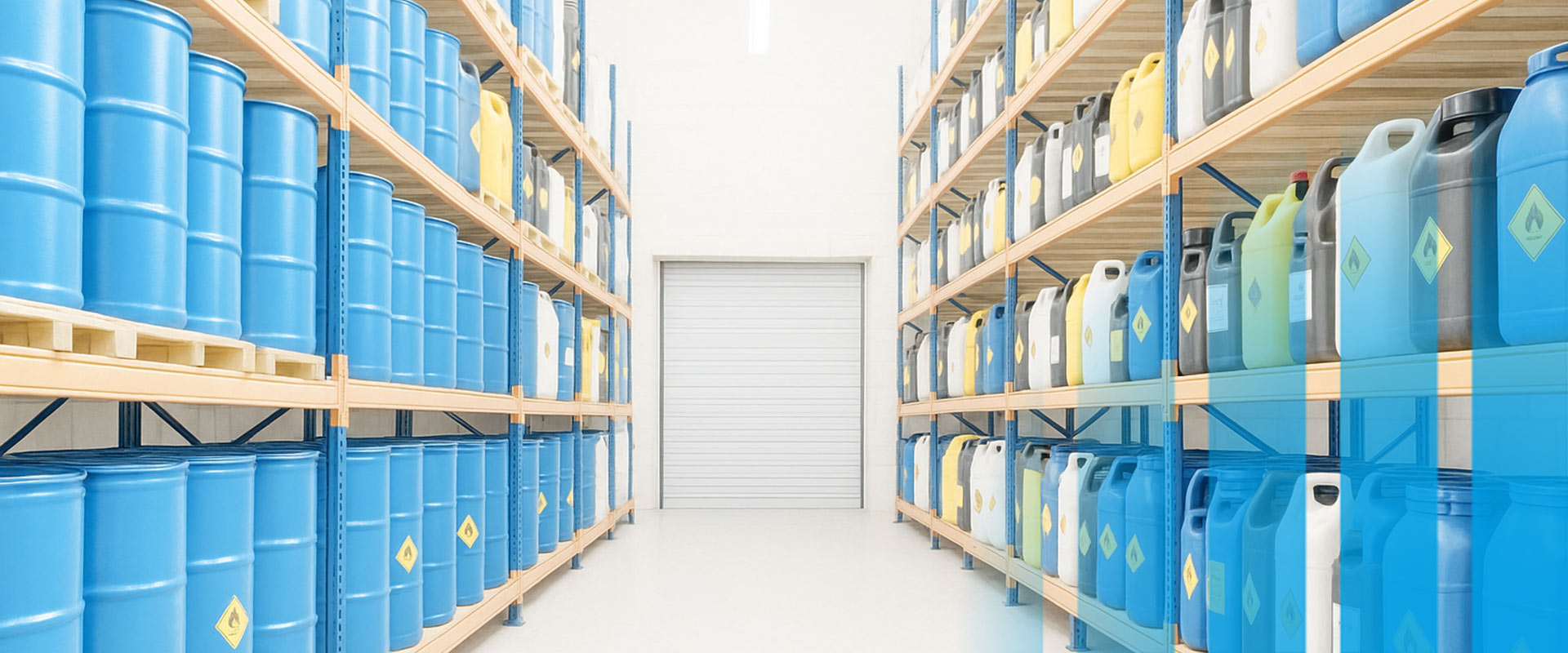Gas warning systems in freight forwarding + logistics
Safety and prevention for professional dangerous goods handling
Gas warning systems in hazardous goods warehouses in freight forwarding and logistics – safety and prevention for professional hazardous goods handling
In the freight forwarding and logistics industry, the safe handling of hazardous substances is part of daily business. Whether storing, picking or handling flammable, toxic or reactive gases such as propane, acetylene, ammonia or hydrogen – the risk of an unnoticed gas leak is omnipresent. Even low concentrations can lead to health hazards and the risk of fire or explosion. This is why the use of reliable gas warning systems in hazardous materials storage facilities is a central component of any safety concept and in many cases a legal requirement.
(e.g. according to TRGS 510, ADR, BetrSichV, ATEX Directive).
Modern stationary gas warning systems enable continuous monitoring of the ambient air for hazardous gas concentrations. If defined limit values are exceeded, automatic measures are triggered in real time – including audible and visual alarms, the activation of ventilation systems or the shutdown of affected operating areas. The systems can be seamlessly integrated into existing warehouse management systems.
or building technology and can be connected to central control stations via Modbus, Ethernet or analog interface. This not only enables an immediate response to hazardous situations, but also seamless documentation of safety-relevant data.
The early detection of potentially hazardous gases is crucial, especially in transshipment warehouses where forklift trucks, loading units or high-bay warehouses are used. Many of these storage areas are difficult to see, are exposed to changing environmental influences and are subject to high throughput requirements.
Robust, low-maintenance gas sensors with explosion protection approval ensure that operation remains safe even under demanding conditions – around the clock.
Advantages for specialist staff and entrepreneurs:
Gas warning systems not only help to meet legal requirements and ensure the safety of personnel, but also to minimize economic risks. Production interruptions, liability claims, insurance claims or loss of reputation can be effectively avoided through preventive safety measures. At the same time, these systems support compliance with occupational health and safety regulations, environmental standards and certifications (e.g. ISO 45001, ISO 14001).
Conclusion:
Gas warning systems are an indispensable tool for hazard prevention in hazardous goods warehouses in the freight forwarding and logistics sector. They protect employees, infrastructure and the environment, fulfill legal requirements and increase operational safety. For entrepreneurs, investing in modern gas detection technology means not only minimizing risk, but also future security and sustainable competitiveness in the logistics sector.
